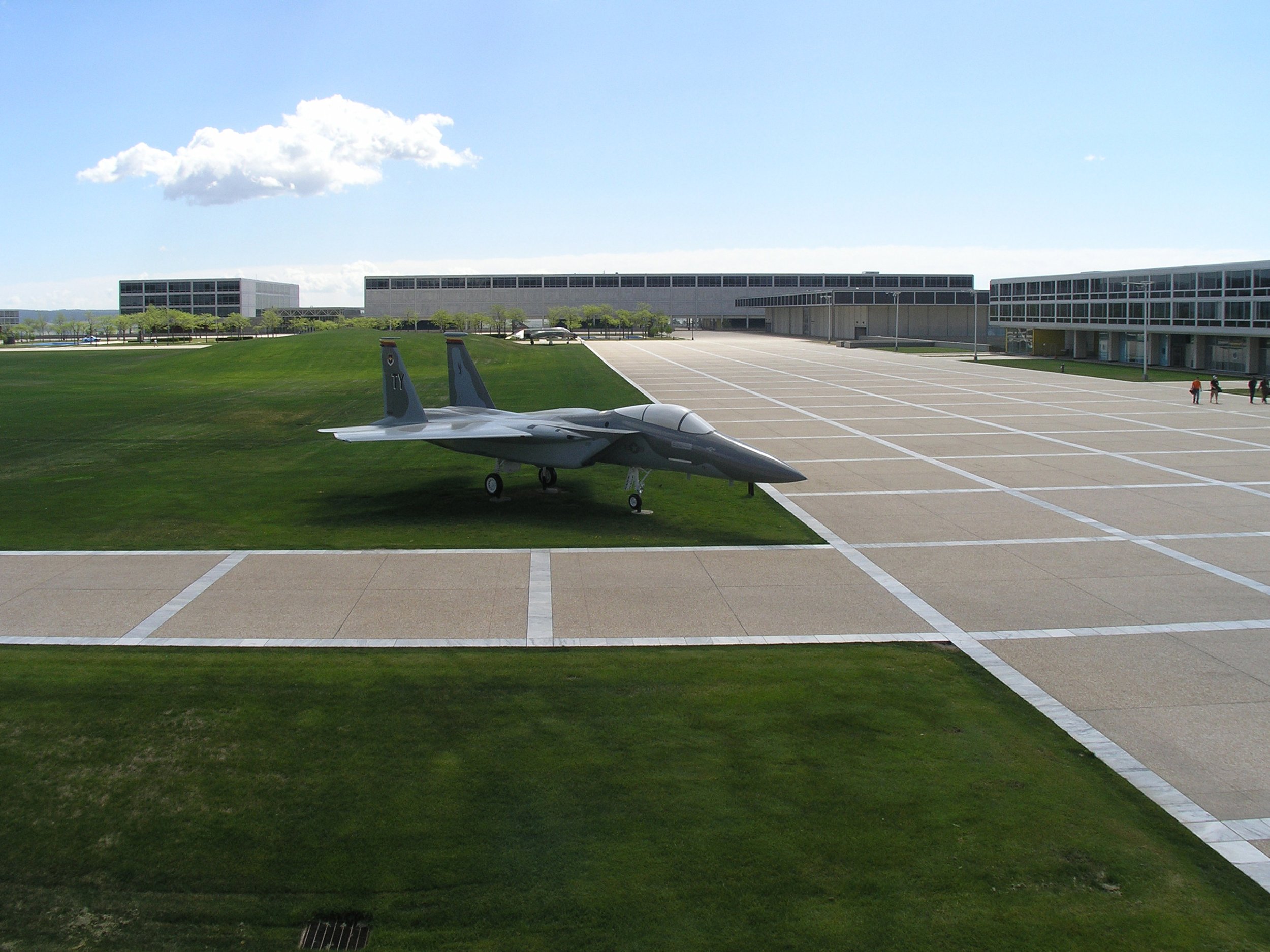
Page 1 of 2
Colorado Springs, Colorado
There is something exciting about leaving everything behind
An hour south of Denver on I-25 (where the legal speed limit is a more reasonable 75 mph), the United States Air Force Academy sits on a generous, choice piece of land up against the Front range of the Rocky Mountains. The 1960s modernist campus features a bunch of buildings that look suspiciously alike and one that most certainly doesn't. The standout is the chapel, an iconic building that manages at once to represent just about every imaginably appropriate symbol, from flight to the mountains to the military.
Inside the main chapel things become a bit unexpected. Strips of stained glass criss cross in (almost) every imaginable direction while large yellow tinted windows frame the mountains and campus. It is a space that deserves to be seen in person.
Two days before my visit I called the Air Force Academy to check to see if the chapel was open, a course recommended on the chapel's own internet site. I asked the guy who answered if the chapel was open, he answered that he needed to "check if any funerals are scheduled... um... I mean if any weddings are scheduled." Luckily (for all) the chapel was open and unreserved.
The chapel is really more than one chapel. The upstairs space is the Protestant Chapel, far and away the most impressive of the three. Downstairs is a Catholic Chapel (at 2/3 the size of the Protestant Chapel) and the Jewish Chapel (at 1/2 the size of the Catholic Chapel). If you are Catholic or Jewish and were eligible to schedule a wedding in the chapel I would consider either lying about your religious affiliation or just converting, at least for the duration of the ceremony.
The chapel and campus were designed by Walter Netsch (you know, the guy who wasn't Gordon Bunschaft or Bruce Graham) of Skidmore, Owings and Merrill and opened in 1962. The rigidity of the campus heightens the dramatic effect of the chapel. It is viewable from a few miles away on I-25, as you approach the campus it is the only building you see or care about. Up close it still feels as right and rational as the rest of the buildings, only with enough originality to make it a hell of a lot more memorable.
Still in Colorado Springs (about 15 minutes south of the Air Force Academy) is Garden of the Gods, an often scaleless city park that imagines that a cluster of big red rocks are in fact gods.
Back in 1978 my parents, sister and I went on a long, three week road trip through Texas, New Mexico and Colorado. On our way to see Pikes Peak I remember seeing a billboard for the Garden of the Gods (or more likely the Garden of the Gods Trading Post) and being intrigued. I asked if we could go, but our mission to drive up Pikes Peak was well defined and clear, it was after all Colorado Springs five star attraction. Twenty six years later I fulfilled that distant nine year old's curiosity, proving once and for that Pikes Peak was and is in fact Colorado Springs' true five star attraction.
The Garden of the Gods is a worthy stop, a free park with several short (20 minute) trails and a few longer ones- all in, around and over those big red gods.
Beyond all those red rocks is Pikes Peak, Colorado Springs big five star attraction and the third or fourth highest peak in the state, albeit the one with the best press. Somehow twenty six years later, one trip up that mountain was still enough.
I really only spent one night in Denver, which in reality was probably enough. The hotel was right in the middle of everything, on the 16th Street Mall and in the fashionable "LoDo" (Lower Downtown) District- where of course you can tell its fashionable because it rhymes with Soho. The only really interesting building there (discounting their almost generic State Capitol building) is Michael Graves' Denver Public Library, probably his best work after that temporary scaffolding he designed for the Washington Monument a few years ago. Unfortunately I could not tell if it was interesting on the inside, the library was closed by the time I got there on a Monday night.
Just across the street from Michael Graves' hulking library is the pointy steel framing for Daniel Libeskind's addition to the Denver Art Museum, scheduled to open in 2006. The addition promises to be Denver's most interesting building, at least until David Adjaye's yet to be designed Museum of Contemporary Art opens in 2007.

